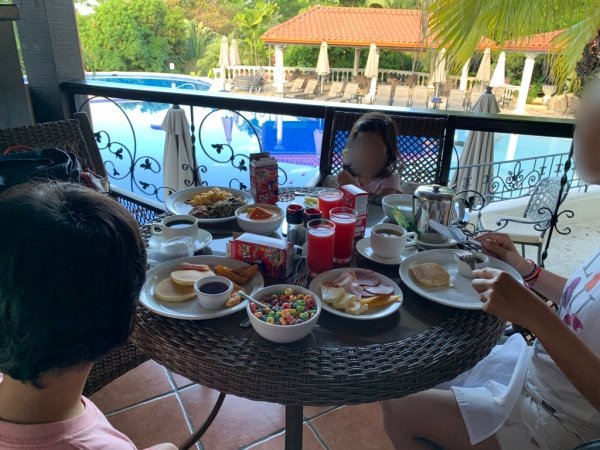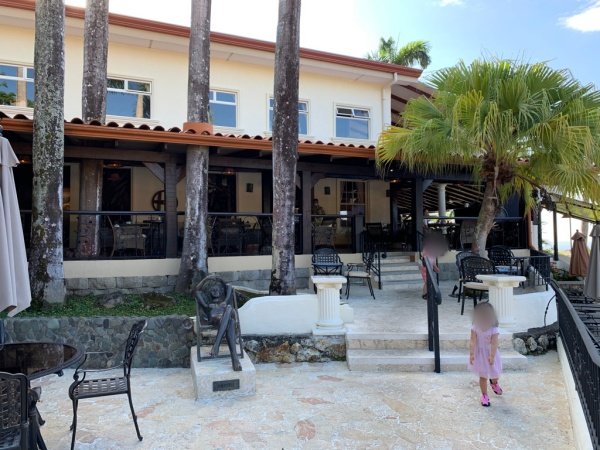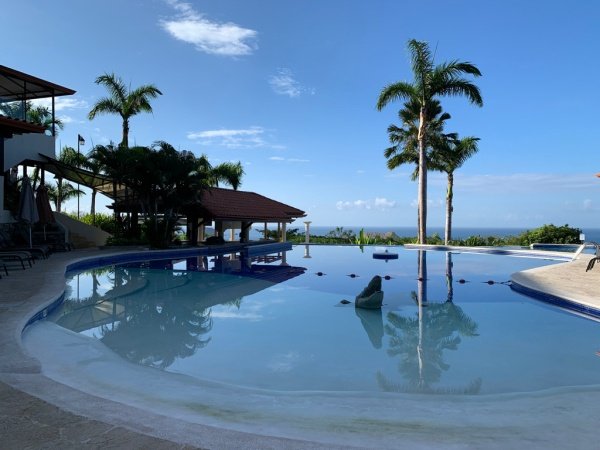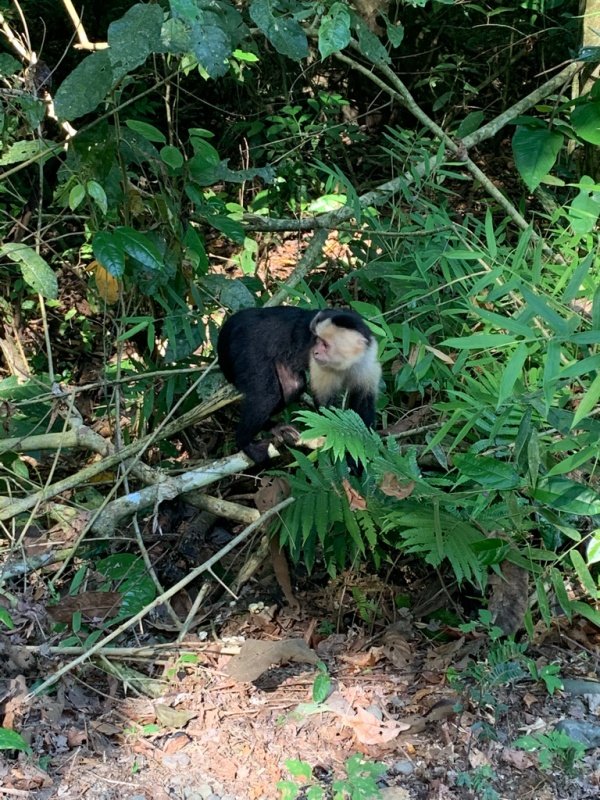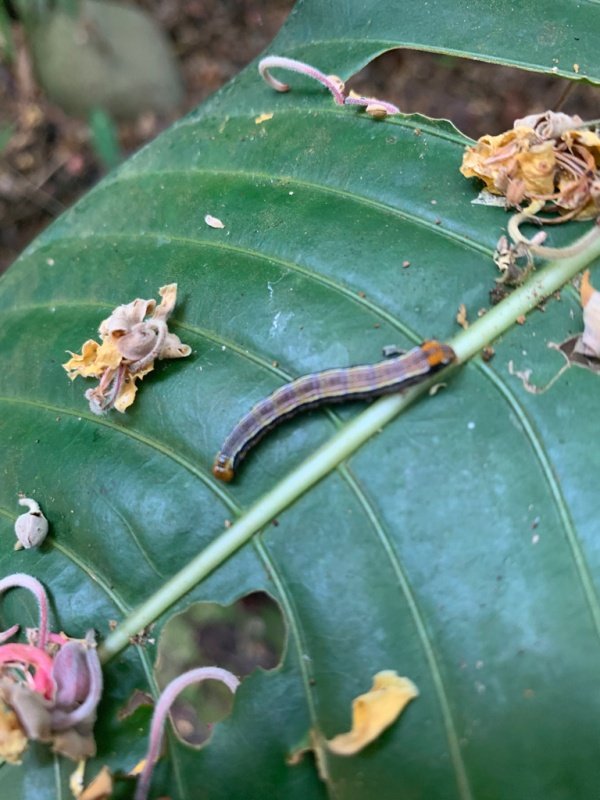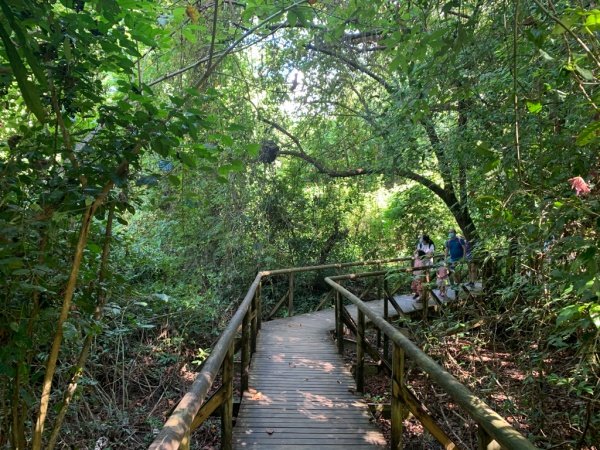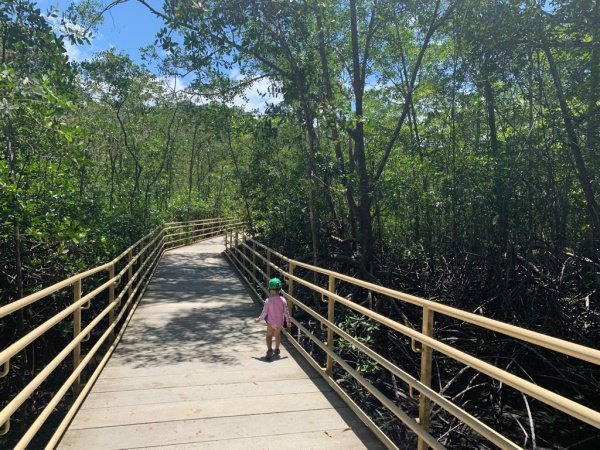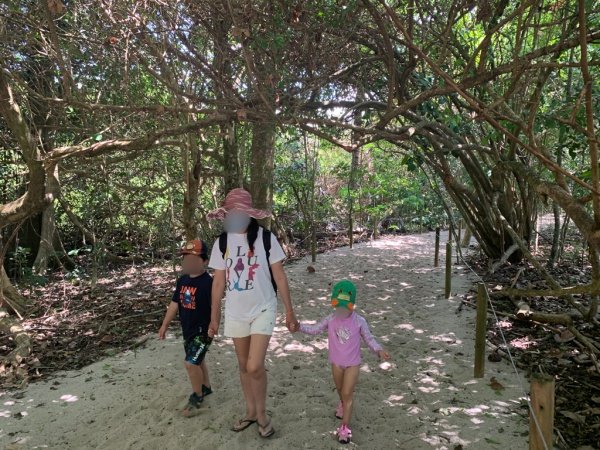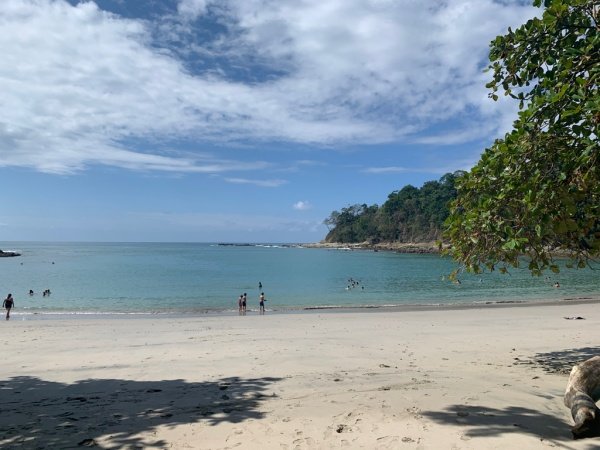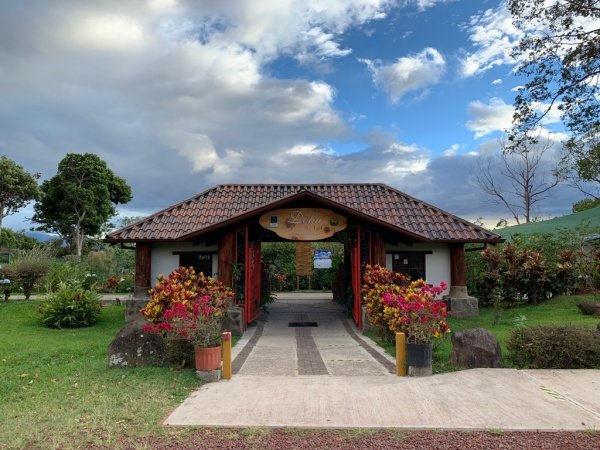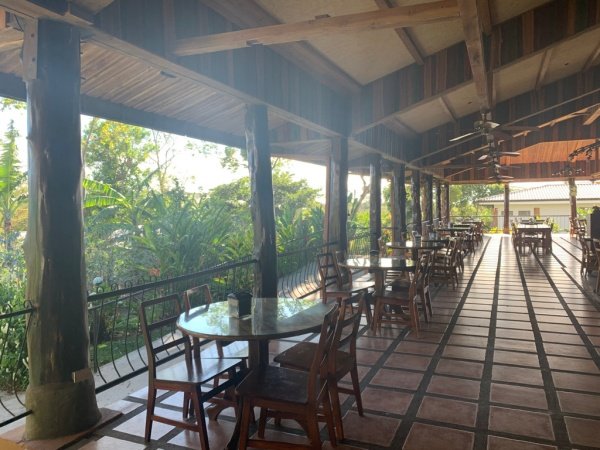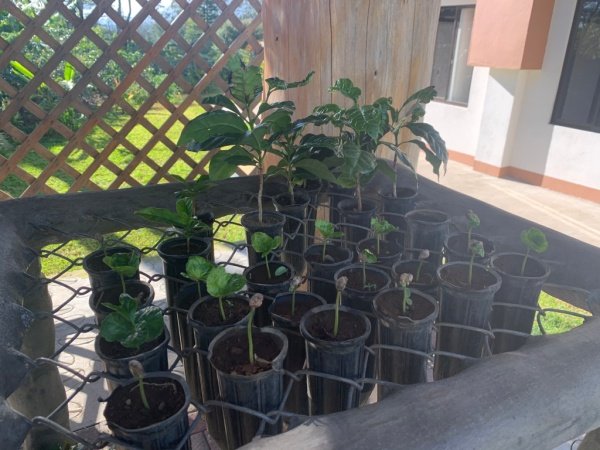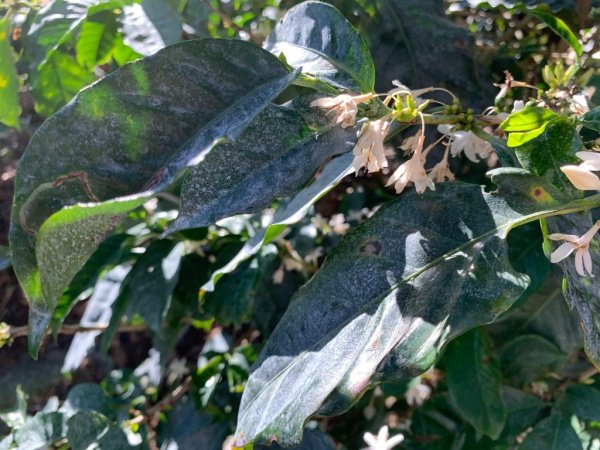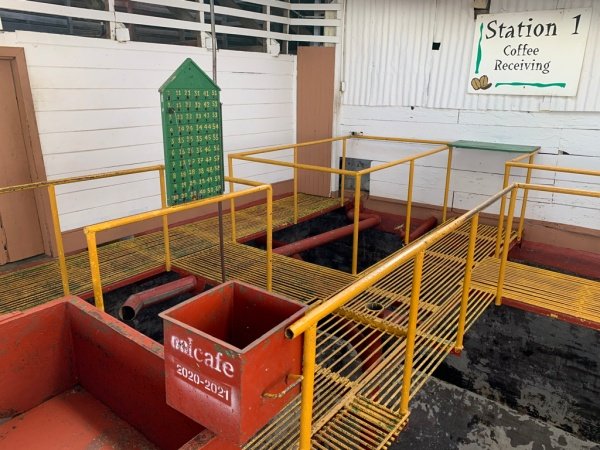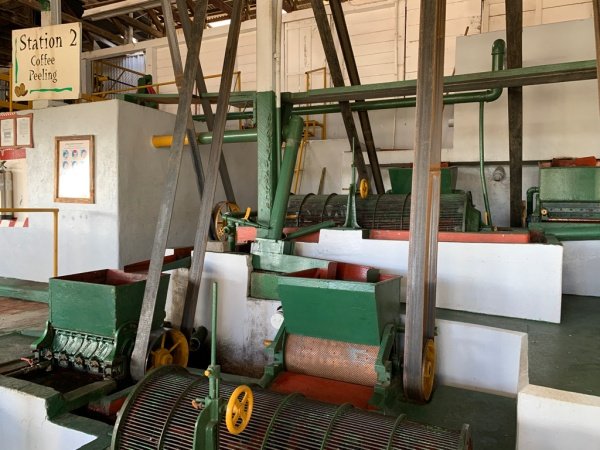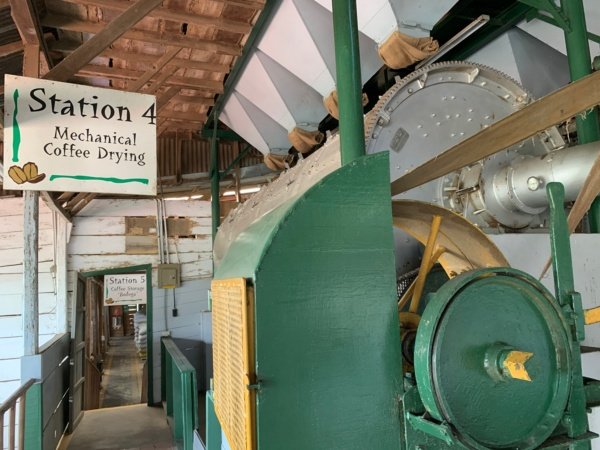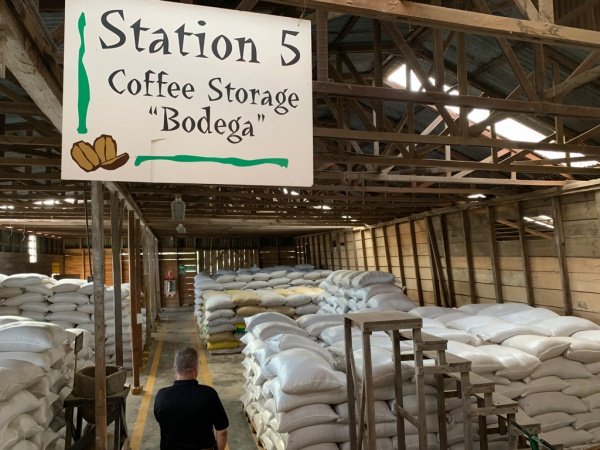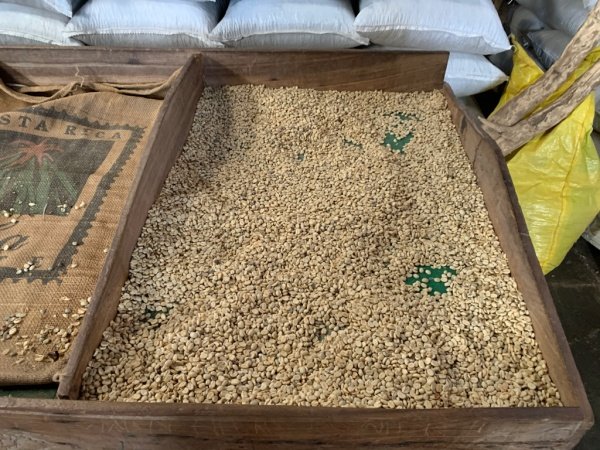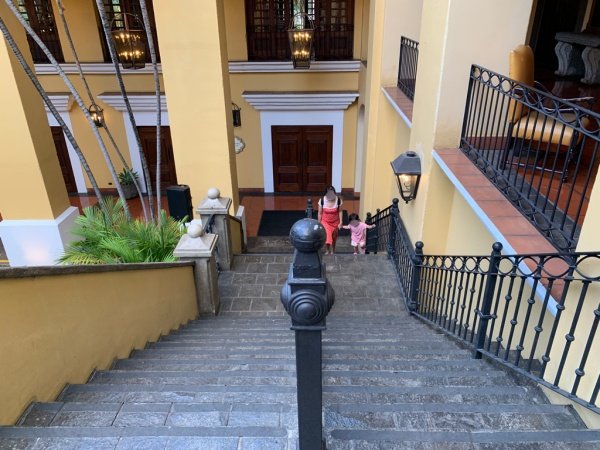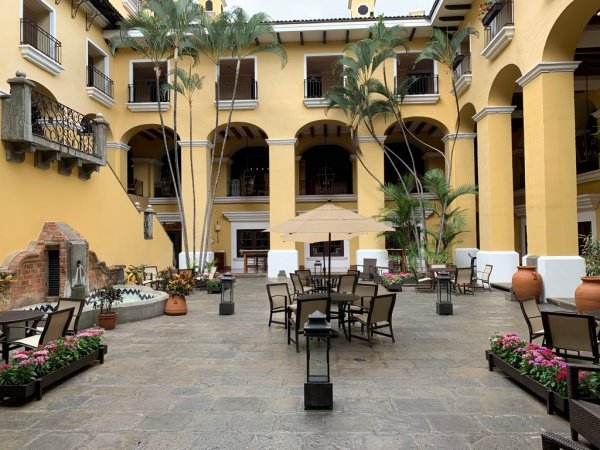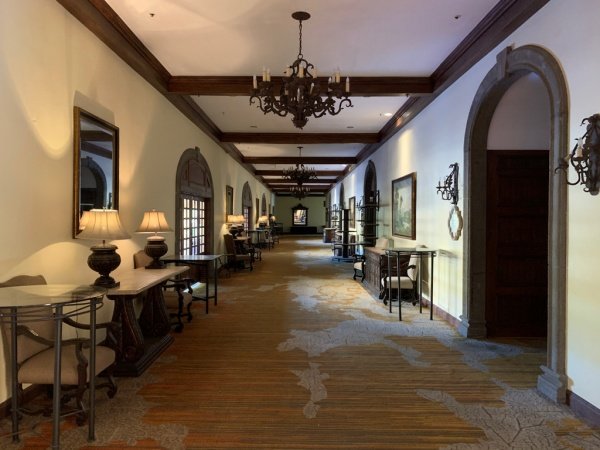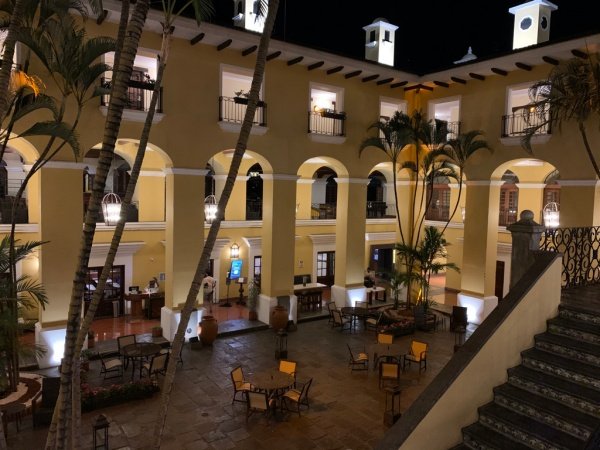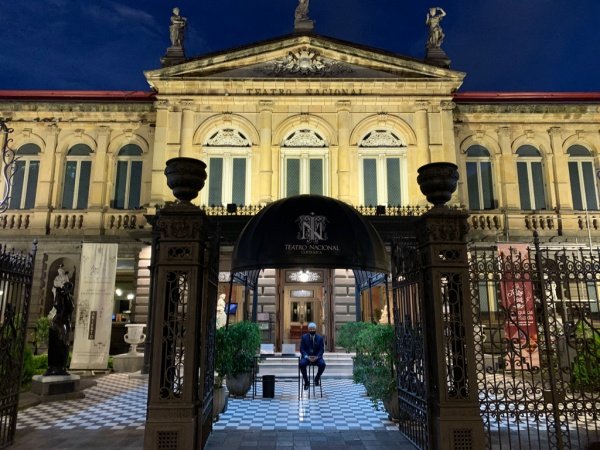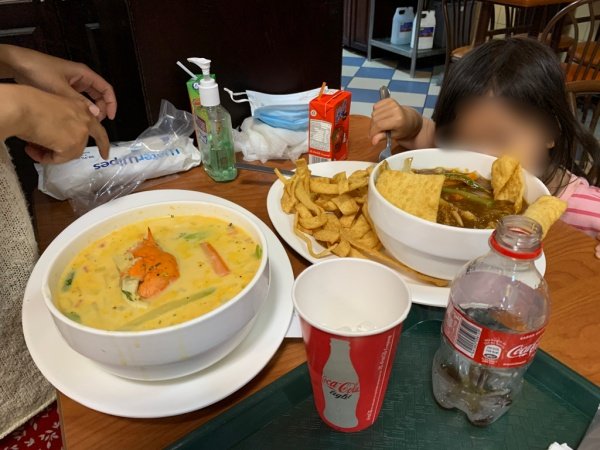Costa Rican Road Trip Episode 10: Trailing Monkeys in Manuel Antonio National Park and Tracing Coffee Beans at Doka Estate
We started our day with breakfast on the porch, surrounded by the calm beauty of our hotel. It felt almost like a private sanctuary—a rare, quiet moment. Maybe it was the pandemic keeping things less crowded than usual, but we loved having this little oasis all to ourselves.
After packing up, we headed to the parking area for a trip into Parque Nacional Manuel Antonio, Costa Rica’s famous coastal gem. Driving into the area, you’ll see signs pointing to various parking options, and we picked one that seemed close enough to walk to the entrance. Manuel Antonio is not just a beachside paradise; it’s an intricate network of trails winding through lush jungle, leading to secluded beaches and home to an incredible range of wildlife. The park’s ecosystem shelters white-faced capuchin monkeys, colorful birds, iguanas, and (for the lucky ones) sloths.
We were early birds at the gate, entering around 8 am, and yet, plenty of other visitors were already exploring. The park’s charm was in full effect as we were almost immediately greeted by a mommy monkey with her baby clinging to her back, tailing us down the trail. She was likely hoping for a snack, though we had nothing but water. Despite the monkey parade, sloths stayed hidden from view. They were likely resting in the treetops, taking a break from the crowd. Even with the elusive sloths, the experience was pure magic, with scenic trails and the soft sand of Playa Manuel Antonio inviting us to relax and play by the water.
By 11 am, we left the park and hit the road for a three-hour drive north, back toward San José. We had a special final stop in mind: Doka Estate, for a coffee tour we’d been eager to experience. But Costa Rican traffic around San José can be unpredictable, and as the roads grew more congested, we worried we’d miss our reservation. Thankfully, we pulled in just in time.
Nestled on the slopes of Volcán Poás, Doka Estate is one of Costa Rica’s oldest coffee plantations and a haven for coffee lovers. The third-generation, family-owned estate is famous for its sustainable coffee-growing practices, which take full advantage of the rich volcanic soil and high-altitude climate—perfect conditions for Arabica beans. With a focus on environmental responsibility and fair treatment for workers, Doka is a name that resonates with coffee enthusiasts and locals alike.
As a coffee lover, visiting plantations is one of my favorite ways to deepen my appreciation for the daily cup. The Doka tour offers a full immersion into the life cycle of coffee, covering everything from planting and harvesting to drying, milling, and roasting. A highlight was seeing the estate’s historic hand-powered coffee mill, one of the country’s oldest, still in operation since the early 1900s. Our kids even got a hands-on experience with sun-drying the beans, using a rake to spread them under the warm Costa Rican sun.
And, of course, we ended with a tasting session to savor Doka’s unique blends. For anyone curious about coffee or Costa Rican culture, this tour is a must—it’s a window into the passion and precision that turns each coffee cherry into the perfect brew.
With the tour behind us, our two-week Costa Rican adventure was drawing to a close. For our final nights, we’re staying at the Marriott Hotel Hacienda Belen, a relaxing spot conveniently near Doka Estate, San José’s bustling downtown, and the airport. It has everything we need for a smooth wind-down: a pool for the kids and easy access to shopping, dining, and city sights. Although there’s plenty to explore in San José, we’ll be taking it easy and wrapping up the trip on a quieter note.
So, I’ll leave our Costa Rican road trip story here for now. Maybe we’ll save San José itself for a future adventure. For now, we’ll just savor the memories of jungles, beaches, and coffee farms until we come back to this unforgettable country.

